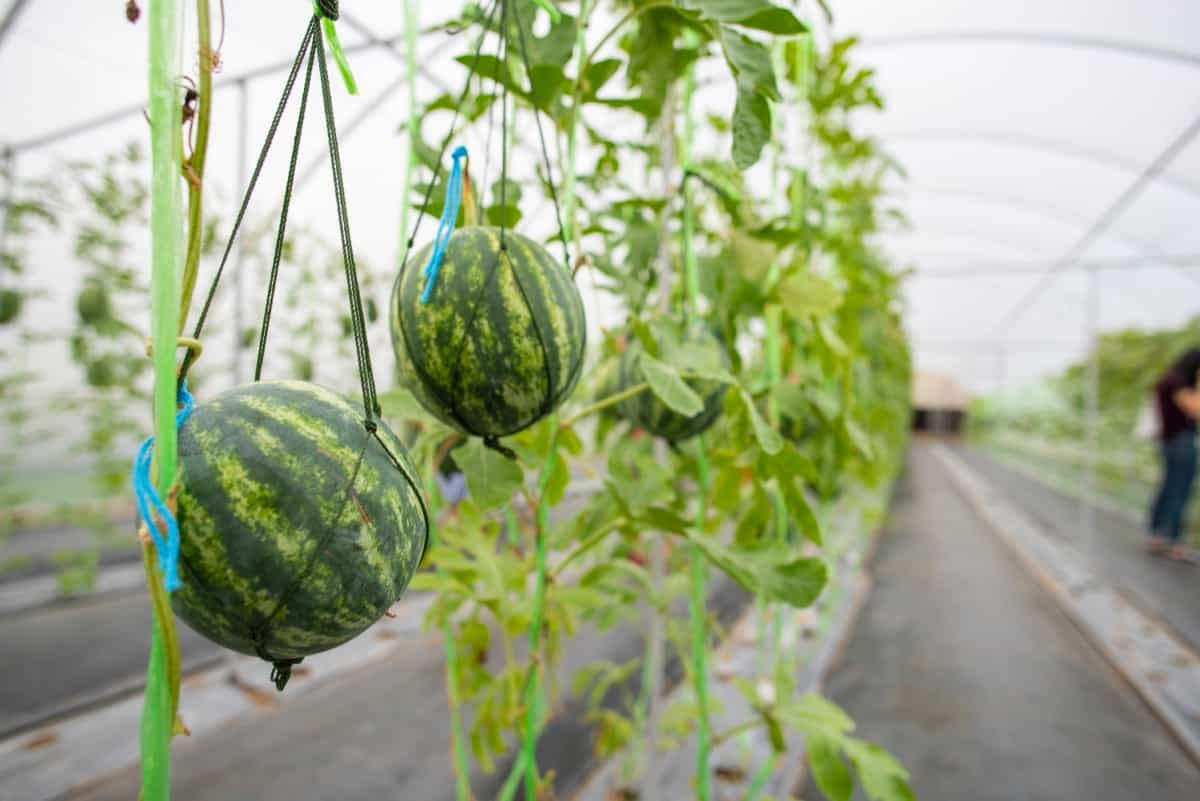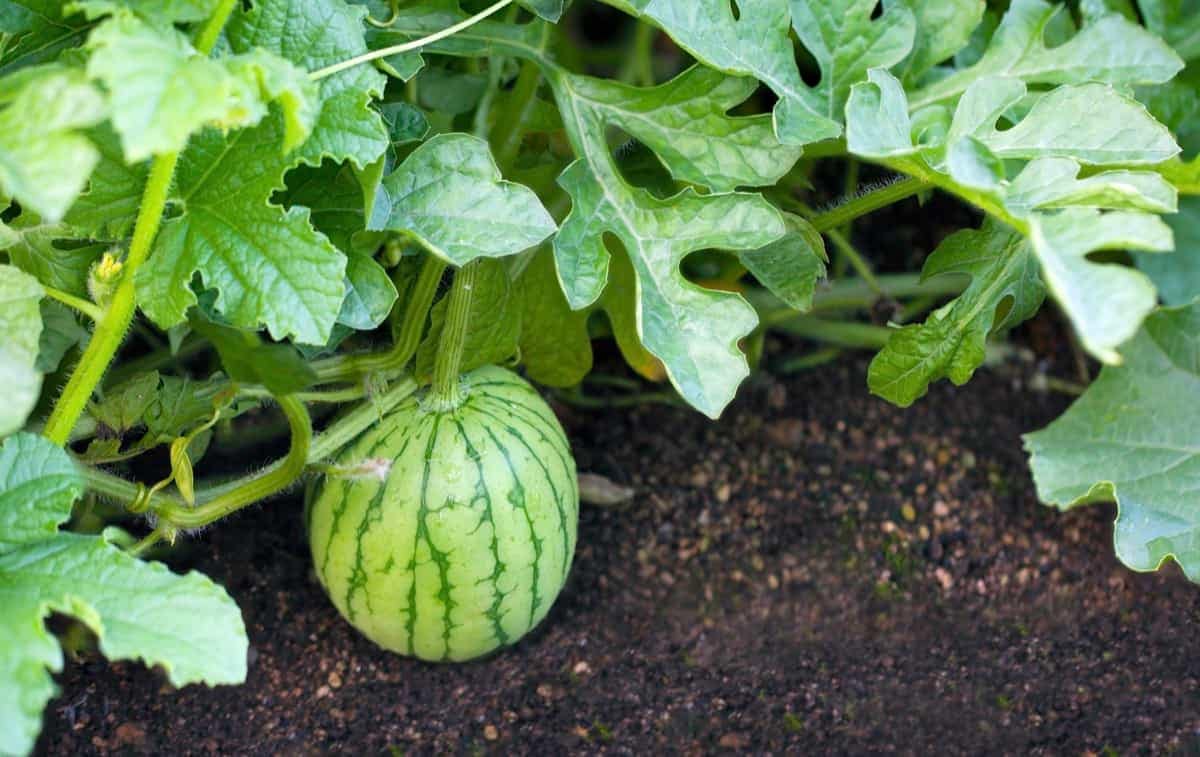Pollination plays a crucial role in the successful growth and development of watermelon. Whether you are a farmer or a home gardener, understanding the different pollination methods can significantly increase your chances of obtaining a bountiful watermelon harvest. In this article, we will explore the two primary pollination methods for watermelon: hand pollination and natural pollination. Additionally, we will provide some useful tips to maximize pollination success.

How to Pollinate Watermelon
Step-by-step Guide to Hand Pollinating Watermelon Flowers
Identify The Male And Female Flowers: The first step in hand-pollinating watermelon flowers is to identify the male and female flowers. Male flowers have a long, slender stem with a single pollen-covered stamen in the center. On the other hand, female flowers have a swollen base, which is the ovary, and a stigma in the center.
Select The Right Time To Pollinate: It is crucial to choose the right time to hand-pollinate watermelon flowers. The best time is early in the morning when the flowers are fully open, and the pollen is at its peak.
Prepare The Tools: Before you start hand pollination, make sure to gather the necessary tools. You need a small brush or cotton swab to transfer the pollen grains to the female flower from the male flower.
Collect the Pollen From The Male Flower: Gently pluck a male flower from the watermelon plant and remove its petals to expose the stamen. Carefully brush or dab the stamen to collect the pollen onto the brush or cotton swab.
Pollinate The Female Flower: Take the brush or cotton swab with the collected pollen and apply it to the female flower’s stigma. Be gentle and ensure that the pollen comes into contact with the stigma to facilitate fertilization.
Protect The Pollinated Flowers: After pollinating the flowers, protect them from external factors that may hinder successful pollination. Use a mesh bag or covering to shield the flowers from insects or wind.
Monitor Progress: Keep a close eye on the pollinated flowers and monitor their progress. If successful pollination has occurred, you should notice the fruits developing within a few weeks.
Maintain Proper Care: Provide adequate water and nutrients to the watermelon plants throughout the growth period. This will help ensure healthy fruit development.
Natural Methods to Encourage Watermelon Pollination
Insect Pollination: Watermelon flowers attract various insects, including bees, butterflies, and beetles, which play a crucial role in pollination. These insects are attracted to the bright yellow color of the male flowers and are drawn by the sweet scent they emit. As the insects move from flower to flower, they inadvertently carry the pollen from the male flowers to the female flowers, enabling pollination to occur.
Wind Pollination: While insects are the primary pollinators for watermelon, wind can also play a role in pollination. As the wind blows, it can shake the male flowers, causing the pollen to be released. The pollen grains can then be carried by the wind and land on the female flowers, facilitating pollination.
Self-Pollination: In some cases, watermelon plants can self-pollinate. This occurs when the pollen from the male flowers falls directly onto the stigma of the female flower of the same plant. Self-pollination is less common in watermelon than cross-pollination, which involves the transfer of pollen between different plants.
Tips for Successful Watermelon Pollination
- Watermelon flowers are typically receptive to pollination for about 24 to 48 hours. Monitor the flowers closely, and try to perform hand pollination during this window to maximize the chances of successful fertilization.
- Bees are the primary pollinators for watermelon plants. Encourage bee activity by planting nectar-rich flowers nearby to attract them. Avoid using pesticides that can harm bees and other pollinators.
- If you notice a lack of bee activity or want to increase the chances of successful pollination, you can hand-pollinate watermelon flowers.
- Watermelon plants thrive in warm temperatures and high humidity. Ensure the growing environment maintains suitable conditions for healthy plant growth and pollination.
In case you missed it: 1-Acre Watermelon Farming Cost and Profit Analysis: Cultivation Economics and Production Project Report

Ideal Time and Conditions for Watermelon Pollination
- Watermelon flowers usually open early in the morning, which is the best time for pollination. During the early hours, the flowers are most receptive, making it easier for pollinators to transfer pollen.
- Watermelon flowers usually open early in the morning, which is the best time for pollination. During the early hours, the flowers are most receptive, making it easier for pollinators to transfer pollen.
- Watermelon plants thrive in humid conditions, which aids in the pollination process. The ideal humidity level for watermelon pollination is around 70% to 80%.
- Strong winds can cause damage to delicate flowers and disrupt the pollination process. Therefore, a moderate amount of gentle breeze is ideal for watermelon pollination.
Attracting Pollinators for Watermelon Fruit Set
Attracting pollinators to your watermelon plants is essential for a successful fruit set and a bountiful harvest. By incorporating pollinator-friendly flowers, providing a water source, avoiding pesticides and chemicals, creating shelter and nesting sites, and optimizing the flowering period, you can create an inviting environment for pollinators. By taking these steps, you are ensuring the health and productivity of your watermelon plants and contributing to the conservation of essential pollinators in your garden.
Tools and Supplies for Watermelon Pollination
- Pollination Brush: Used to transfer pollen from the male flower to the female flower.
- Q-tips or Cotton Swabs: In the absence of a pollination brush, Q-tips or cotton swabs can be used as an alternative.
- Isolation Bags: Used to protect selected female flowers from unwanted pollination.
- Watering Can or Sprayer: To provide the necessary hydration to the plants, especially during dry spells.
- Insect Netting: To protect your watermelon plants from unwanted pests that can disrupt the pollination process
- Plant Labels: This will help you identify and differentiate between the various plants, ensuring effective pollination and accurate record-keeping.
- Pruning Shears: By removing dead or diseased parts, the plant can concentrate all its energy on producing healthy flowers and fruits.
- Fertilizer: Providing watermelon plants with the necessary nutrients is crucial for optimal pollination.
- Protective Gloves: To avoid any potential skin irritation or injuries.
Common Challenges in Watermelon Pollination and How to Overcome Them
One of the primary challenges in watermelon pollination is the lack of pollinators, such as bees and other insects. To overcome this challenge, growers can encourage the presence of pollinators by planting flowers that attract pollinators nearby or using bee colonies for pollination can significantly enhance pollinator activity and improve fruit set. High temperatures can cause the pollen to become non-viable, while strong winds and rain can interfere with pollinators’ movement and pollen transfer.
To address this challenge, growers can employ protective measures, such as shading structures to reduce heat stress, windbreaks to minimize wind damage, and row covers or tunnels to shield flowers from heavy rain. Sometimes there can be an imbalance, with either a shortage of male flowers or an excess of female flowers. This can result in poor pollination and reduced fruit set. To address this challenge, farmers can employ techniques such as hand pollination or selective pruning.
In case you missed it: Hydroponic Watermelon Farming in a Greenhouse: Key Rules to Start from Scratch

Conclusion
By understanding and implementing both hand pollination and natural pollination methods, you can significantly improve the pollination success of your watermelon plants. Remember to be patient as the fruit develops, and enjoy the rewarding process of growing your watermelons.
- Feed Your Flock for Less: Top 10 Tips to Save on Chicken Feed
- Ultimate Guide to Ossabaw Island Hog: Breeding, Raising, Diet, and Care
- Hatching Answers: The Top 10 Reasons Your Chickens Aren’t Laying Eggs
- Eggs and Economics: Breaking Down the Cost of Raising Backyard Chickens
- Defend Your Greens: Proven Methods to Keep Iguanas Out of Your Garden
- Ultimate Guide to Cinnamon Queen Chicken: A Comprehensive Guide for Beginners
- Ultimate Guide to California Tan Chicken: Breeding, Raising, Diet, Egg-Production and Care
- Ultimate Guide to Marsh Daisy Chicken: Breeding, Raising, Diet, and Care
- 10 Types of Chicken Farming Businesses You Can Start for Profits